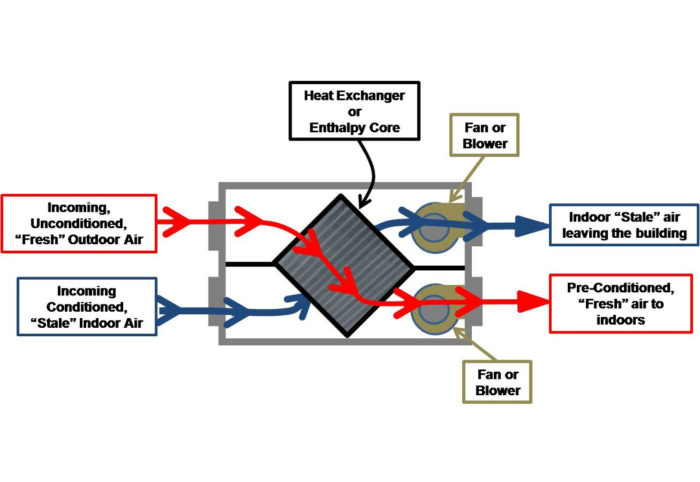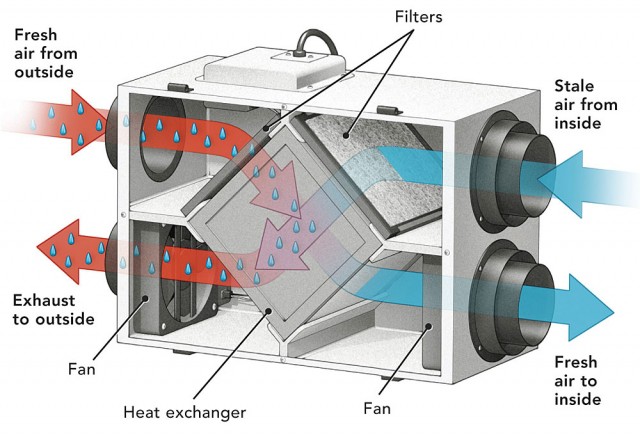The Growing Importance of HRV in Energy-Efficient Home Design
Wiki Article
The All-Inclusive Guide to the Uses of Heat Recovery Ventilation in Modern Structures
Heat Recovery Ventilation (HRV) systems stand for a significant improvement in developing modern technology (HRV Heat Recovery Ventilation). They provide a method for trading stagnant indoor air with fresh exterior air while minimizing energy loss. This approach not just enhances interior air high quality but also contributes to energy performance in both property and industrial structures. Recognizing the different applications and benefits of HRV can disclose its crucial function in contemporary design and sustainability initiatives. The effects of this modern technology deserve exploring additionallyComprehending Heat Recovery Ventilation Equipments

Numerous modern buildings focus on energy performance, comprehending warmth recovery air flow (HRV) systems is crucial for maximizing interior air top quality and decreasing power intake. HRV systems function by transferring warm from stale indoor air to incoming fresh air, effectively preserving comfortable indoor temperatures while minimizing power loss. These systems contain a warmth exchanger, followers, and ductwork that assist in the blood circulation of air. Throughout winter season, HRV devices record and reuse warm from the outbound air, while in summertime, they can assist cool incoming air. By continually exchanging air, HRV systems likewise decrease moisture and the concentration of indoor pollutants. Correct setup and maintenance of HRV systems are crucial for their effectiveness and performance in boosting total building performance and comfort.
Benefits of Heat Recovery Ventilation
Heat recovery ventilation systems provide numerous advantages that boost both power efficiency and interior air top quality in contemporary buildings. By recording and recycling energy from exhaust air, these systems greatly lower heating & cooling prices, resulting in reduced energy intake. They keep a stable circulation of fresh outdoor air, decreasing the risk of interior air contaminants and allergens. This continual exchange assists manage humidity levels, protecting against mold and mildew development and ensuring a much healthier living environment. Furthermore, HRV systems contribute to sustainability objectives by reducing general carbon footprints. Their capacity to optimize ventilation without sacrificing thermal comfort makes them a beneficial addition to contemporary building design, promoting both economic and eco-friendly advantages.Applications of HRV in Residential Buildings
As homeowners progressively focus on energy efficiency and interior air high quality, the applications of warm recuperation air flow (HRV) systems in household buildings have come to be much more common. HRV systems are specifically beneficial in tightly secured homes, where maintaining fresh air blood circulation is essential for protecting against wetness accumulation and indoor toxins. They efficiently transfer heat from outbound stale air to incoming fresh air, minimizing energy prices connected with home heating and air conditioning. Furthermore, HRVs can enhance comfort levels by regulating humidity important link and temperature. They are additionally versatile for different household designs, including single-family homes and multi-unit structures. Generally, incorporating HRV systems supports sustainable living practices while ensuring a healthier indoor atmosphere for residents.HRV in Business and Commercial Settings
In commercial and commercial setups, the implementation of warmth healing air flow (HRV) systems has become increasingly important for maximizing power performance and keeping air top quality. These systems effectively move warmth from exhaust air to incoming fresh air, decreasing the demand for added heating or cooling. This not only decreases energy expenses but additionally adds to sustainability initiatives. Industries such as production, warehousing, and office structures benefit greatly from HRV systems, as they help regulate temperature and moisture levels, guaranteeing a comfortable and productive setting. HRV systems help in removing pollutants and excess wetness, enhancing indoor air high quality. As policies around air high quality become stricter, the fostering of HRV technology is likely to expand, making it an essential part of contemporary industrial and commercial facilities.Future Fads in Heat Recovery Ventilation Modern Technology

Frequently Asked Questions
Exactly How Does Heat Recovery Ventilation Impact Indoor Air Top Quality?
Heat recovery ventilation considerably boosts indoor air high quality by continually exchanging stale indoor air over at this website with fresh outside air while recovering power. This process decreases toxins, keeps optimal moisture levels, and assures a much healthier environment for passengers.Can HRV Systems Be Set Up in Existing Structures?
HRV systems can without a doubt be mounted in existing buildings. Retrofitting may call for alterations to ductwork and ventilation layouts, but it significantly improves energy performance and indoor air high quality, making it a feasible alternative for older structures.What Upkeep Is Required for HRV Solutions?

Exist Specific Climates Where HRV Is More Effective?
Heat recovery ventilation systems are particularly effective in climates with considerable temperature differences in between periods. These systems maximize energy performance by recuperating warm from exhaust air, making them perfect for both chilly and reasonably cozy atmospheres.Just How Do HRV Solutions Affect Power Expenses?

Report this wiki page